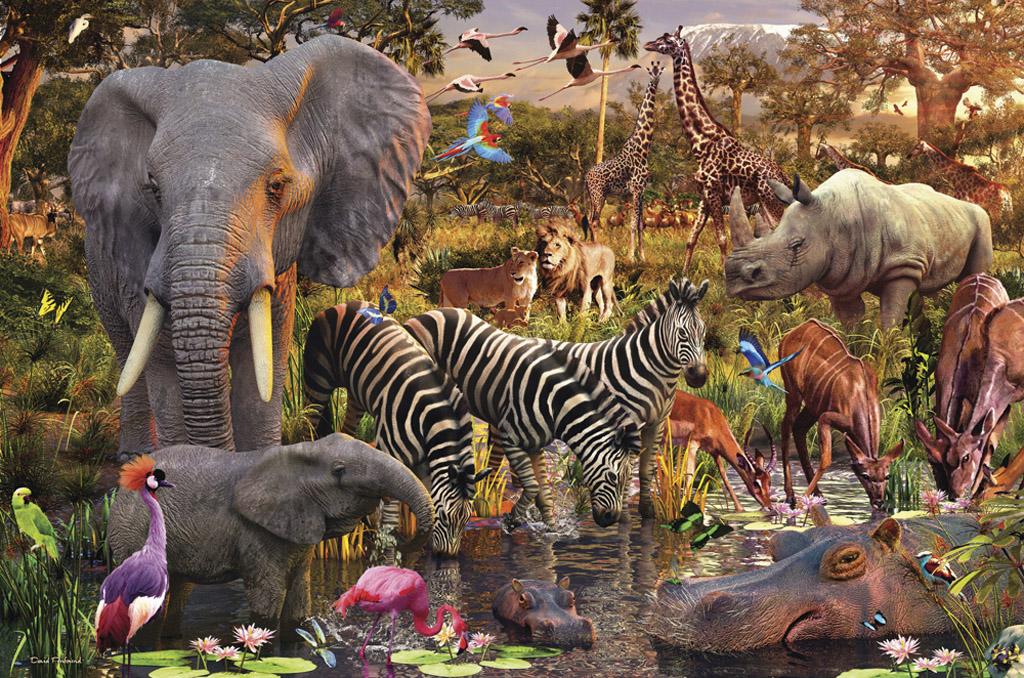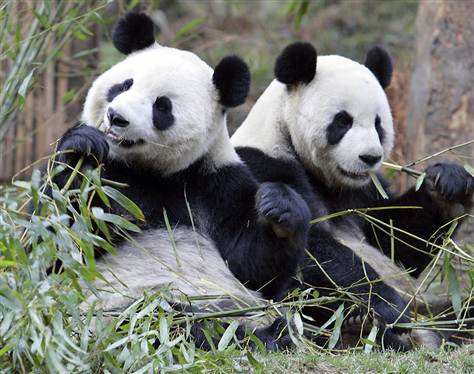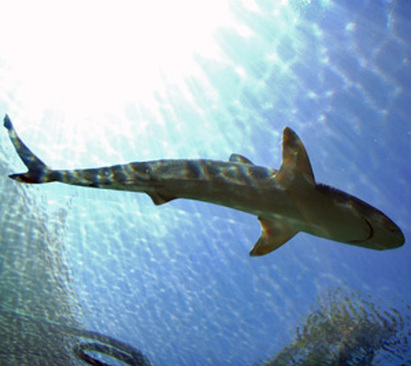Author: Dr. Mercola Date: 12/22/2011 Chapter 8: Environmental Health and Toxicology Content of the Article: http://articles.mercola.com/sites/articles/archive/2011/12/22/bpa-exposure-health-problem.aspx Summary The problem in the article is the presence of BPA (Bisphenol-A) in the lining of mostly all of canned food products, cash register receipts, plastic and metal bottles, and even BPA-Free plastic itself. This is a problem because BPA is an endocrine disruptor and can imitate our body's hormones in a way that can be hazardous for our health (it interferes with the production, secretion, transport, action, function and elimination of natural hormones). The humans are the players because we are manufacturing products containing this chemical invented in 1891 and no strict safety regulations regarding the daily exposure of BPA (due to everyday contact with products containing BPA) in humans have been made. The humans are the ones being affected because although BPA does not add up in the human body, the recurring exposure still adds up. BPA is considered a pseudo-persistent chemical because our daily contact with BPA maintains a high enough level of the chemical that we would have if BPA accumulated within our bodies. As a result, humans may suffer from obesity and insulin resistance (both of which have been linked to BPA in humans). Some solutions to this problem would be to avoid BPA by stopping the use and purchase of products containing BPA and products labeled as BPA-Free, which can sometimes have more BPA than if labeled as having BPA. We should buy glass containers or fresh vegetables instead of canned foods. People should not microwave or wash in hot temperatures any products that may contain BPA and people should consider eating fermented foods or taking probiotic formulas which will help the friendly bacteria in our guts to break down BPA and reduce the amount absorbed by our intestines. The government should take part in ensuring the safety of the people by passing consumer laws that ban the use of BPA in products or reduce the amount of BPA used in products, as well as label the products with the amount of BPA they were produced. I feel that this article raised my awareness on the harmful effects of BPA and which products to steer clear from in order to live a healthy, toxic-free life. This article relates to AP Environmental Science because in chapter 8, the amount of BPA exposure in our everyday human life was discussed as well as the dangers that come from it (BPA exposure). In the article, the types of diseases caused by BPA exposure were revealed just like in chapter 8. Both the article and the book offered possible solutions to help reduce the amount of BPA an average human is exposed to and both agreed that even low levels of toxic may be dangerous to our health's if the exposure is prolonged. I have learned that even the things that we may find safe are not at all what they seem to be as seen in the example of ''BPA-Free'' labeled products-they guarantee our safety but in reality they may be more dangerous than products that don't guarantee our safety. The world is full of dangers and it is up to us to educate ourselves and decide whether or not we will believe the lies and promised securities of others.
0 Comments
Author: Nicolas Jordan Deere Date: July-August 2011 Chapter 6: Population Biology Content of the Article: http://www.environmentmagazine.org/Archives/Back%20Issues/2011/July-August%202011/exploitation-or-conservation-full.html Summary The problem in the article is the uncontrolled hunting in Africa, especially the hunting-tourism industry, which harvests game species in a way that does not allow population sizes of rare and endangered species to have a long-term viability. The players are the humans because they are hunting species in a way that does not help sustain biodiversity and species. The humans are over hunting and are not taking into consideration conservation biology. The animal species in Africa are the ones being affected because their population numbers are decreasing and it is difficult to protect these species because of the lack of protected, large areas able to maintain varied, viable animal populations. Some solutions to the problem are to enforce laws that will ensure that only a sustainable amount of animals are being hunted and to have the government buy privately-owned land in order to establish more conservation/reservation parks that will sustain complex animal populations. In this way, animal populations can grow at a normal, steady pace and not be endangered and prone to extinction. This article helped me realize how serious of an impact humans make on animal populations. I feel more aware of the over hunting (that's unnecessary for the most part) and agree that extensive measures against illegal hunting and poaching should be made. This article relates back to AP Environmental Science because like in the case study of chapter 6, animals from Africa are being over hunted (too fast to reproduce and maintain a stable population) and most are close to extinction. However, conservation biologists (section 6.4), are advancing efforts to help reduce the killing of species and protect endangered species. I have learned that hunters target animals with the best physical characteristics because they are seen as trophies, which only reduces the remaining population's survival chances (if the fittest individuals are killed, the unfit or ''weak'' ones are left), increasing their chance of extinction. Author: No authors were given: Made by Lazywebsite
Chapter 4: Evolution, Biological Communities, and Species Interactions Video Clip: https://www.youtube.com/watch?v=jn5lloTL89s Content of the Article: http://darwinevolved.wordpress.com/2011/06/14/panda-evolution-evolution-of-pandas/ What Was The Article About? Pandas, a part of the oldest family of the most primitive lineage of bears, have adapted to the widespread plant resources of southern Asia through the long process of evolution, and lost many of the carnivorous and omnivorous traits of their ancestors and have developed specialized adaptations for feeding on plants. The constant availability of bamboo caused the pandas to become increasingly dependent on the plant as a main food source and encouraged the pandas to evolve to only eating bamboo (and a small variety of other plant species). Bamboo was abundant in areas where panda populations were abundant and once food became scarce in one area, the pandas would move to another area where food was plentiful. However, as humans increasingly dominated the area, the pandas were forced to retreat to isolated mountain regions. Now as bamboo forests are being cut down, the panda species may become extinct due to their inability to eat plants outside of their diet (bamboo and a few other plants). Reflection The problem in the article is that the pandas have evolved into only being able to eat bamboo and a few other specific plants which limits their diet and may cause their extinction if bamboo or any of the plants they eat become scarce or completely die off. In other words, since pandas are increasingly dependent on bamboo as a main food source, the disappearance of bamboo forests may cause the extinction of the species. The players are the pandas themselves because they began to only (mainly) eat bamboo since it was a constant and reliable source of food through changes in climate and in season, during the time the early pandas existed. The pandas are the ones being affected because they are endangering the lives of the panda species by not having a varied diet. The solutions to this problem are that the pandas should be gradually exposed to a variety of plant species so they can once again evolve into being more versatile. I feel that this article made me realize that although evolution may save lives, it can also endanger them to the point of extinction. It was very informative and written in a way that was detailed, making me find that evolution needs to be thought out (the pandas should have never stopped eating a wide diet). The article relates to AP Environmental Science because in chapter 4, Darwin’s theory of evolution and natural selection were explained to happen gradually as genetic traits needed for survival were changed over generations in order to allow individuals to compete for scarce resources. In chapter 4, evolution, pandas feeding exclusively on bamboo and resource partitioning was discussed, which relates back to the article when the panda evolution took place due to resource partitioning and for bamboo availability. I have learned that every organism should have some variety in their diet or the organism might die if the food source becomes scarce or extinct- although a food source may be abundant during a certain period of time, in a few decades or centuries, the food source may be non-existent. Author: No authors were given: Made by the Census of Marine Life
Chapter 3: Matter, Energy, and Life Video Clip: https://www.youtube.com/watch?v=yzlqXMateRE Content of the Article: http://www.coml.org/discoveries/trends/shark_decline_effects What Was The Article About? Sharks, [apex] predators at the top of the food chain, keep populations of other fish in healthy and proper proportions within their ecosystems, yet they are decreasing in population numbers due to human hunting. Sharks are being killed for their fins to make shark fin soup, which is not an important part for human survival or health. Instead, the decreasing number in shark population, has negatively affected the lower trophic levels of the marine ecosystems; populations of prey species have been outpaced to replenish its own stock. Other species of predators that the sharks would normally eat are increasing in number and overeating prey populations. For example, an increase in the cownose rays in the Mid-Atlantic seacoast of the United States (due to the decrease in the shark population that prey on cownose rays) has resulted in a decreased bay scallop population (cownose rays prey on scallops). If the ecosystem does not return to normal, the negative effects caused by the over hunting sharks, will extend to other commercially important organisms like oysters and clams. Reflection The problem in the article is the over hunting of sharks by humans, the players, to make shark fin soup and other commodities. The marine ecosystems and the animals living in it are the ones being negatively affected because the lack of sharks is allowing the mesopredator population to increase and in turn, is reducing the populations of lower level prey species. The solutions to this problem are to limit human interference and allow healthy numbers of sharks to swim in the oceans or to balance the hunting numbers; sharks should be hunted but only if a variety of other predator and prey species are being hunted in equal amounts. The governments of the countries should pass laws restricting the hunting of sharks and start shark conservation efforts to maintain a stable shark population. The way I feel towards the article is that it was very informative in explaining how important the shark species is to the whole functioning of the ecosystem; the article showed the negative impacts human intervention can have in ecosystems where sharks are being over-hunted. It showed me that exploiting sharks for unnecessary things is wrong and should be stopped as soon as possible. The article relates to AP Environmental Science because in chapter 3, the relationship between species of consumers with other species of consumers was explained to be linked to a food chain; each time an organism feeds, it becomes a link in a food chain, which become interconnected when predators feed on more than one kind of prey, forming a food web, in the same way the article demonstrated how the sharks are connected to the life of other species (that also may be connected to other species) that are important in maintaining an ecosystem. The importance of a balance in nature was emphasized and the consequences of disobeying and interfering with natural ecosystems were shown to have been negative to not just one, but many species in a food web. I learned that the disturbance of a single species of organism in an ecosystem can not only affect another or few species, but affects a variety, if not all, of the organisms living in an ecosystem and without all of the ''components'' needed for a food web to properly function, the ecosystems will fail and may cause the disappearance of numerous species (i.e. the low population of sharks increases the population of cownose rays and the cownose rays begin overeating animals in the lower levels of a food web to the point where the species cannot reproduce fast enough, resulting in their extinction). |




 RSS Feed
RSS Feed